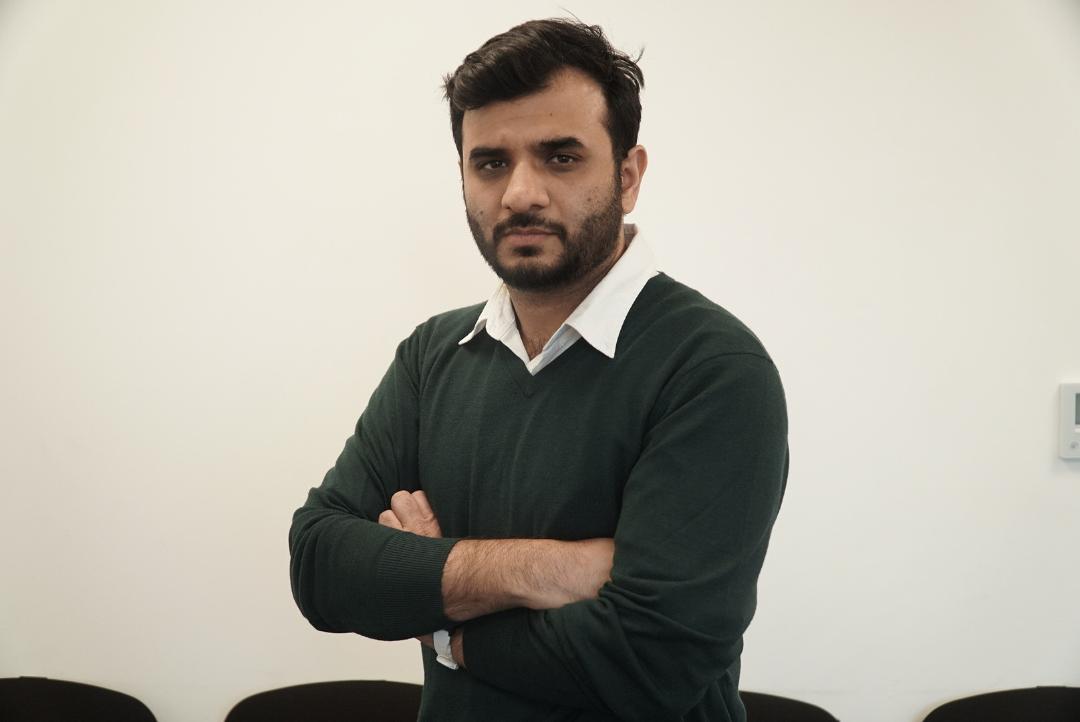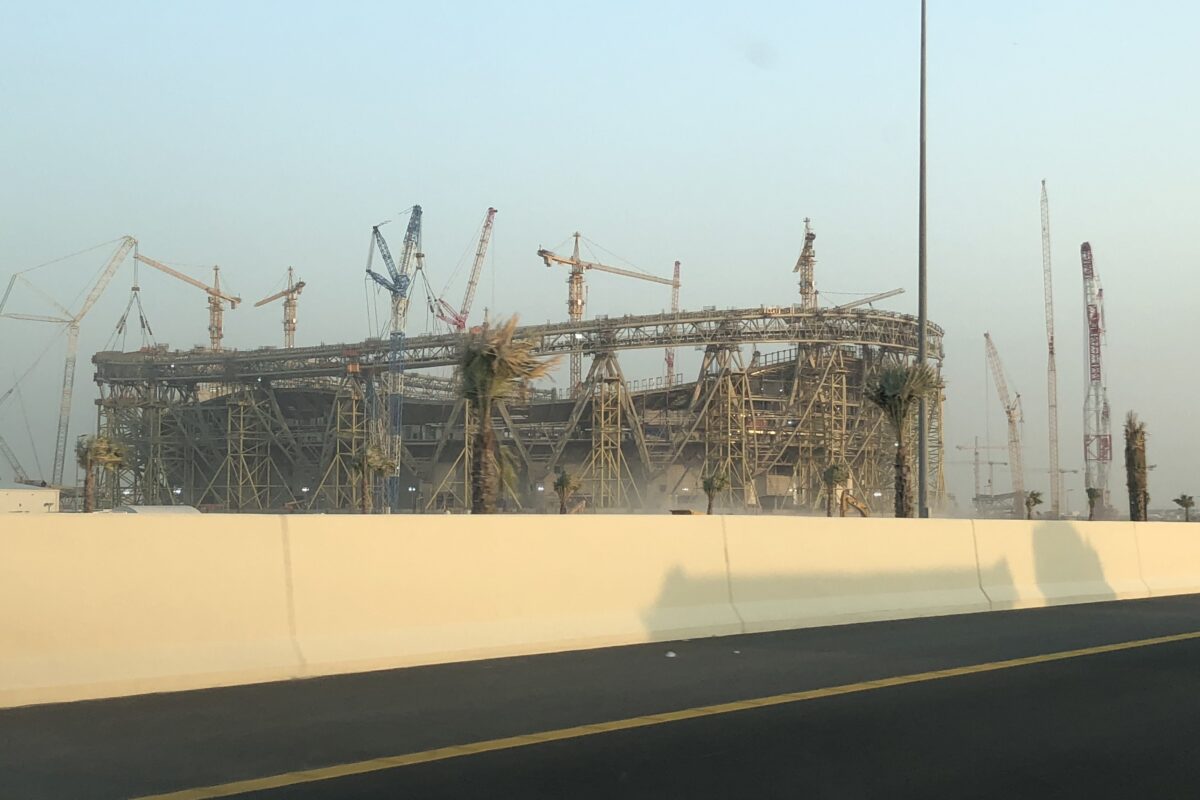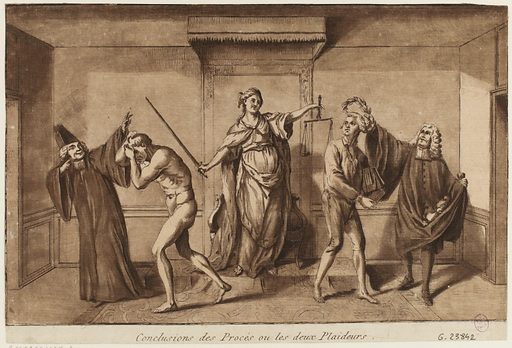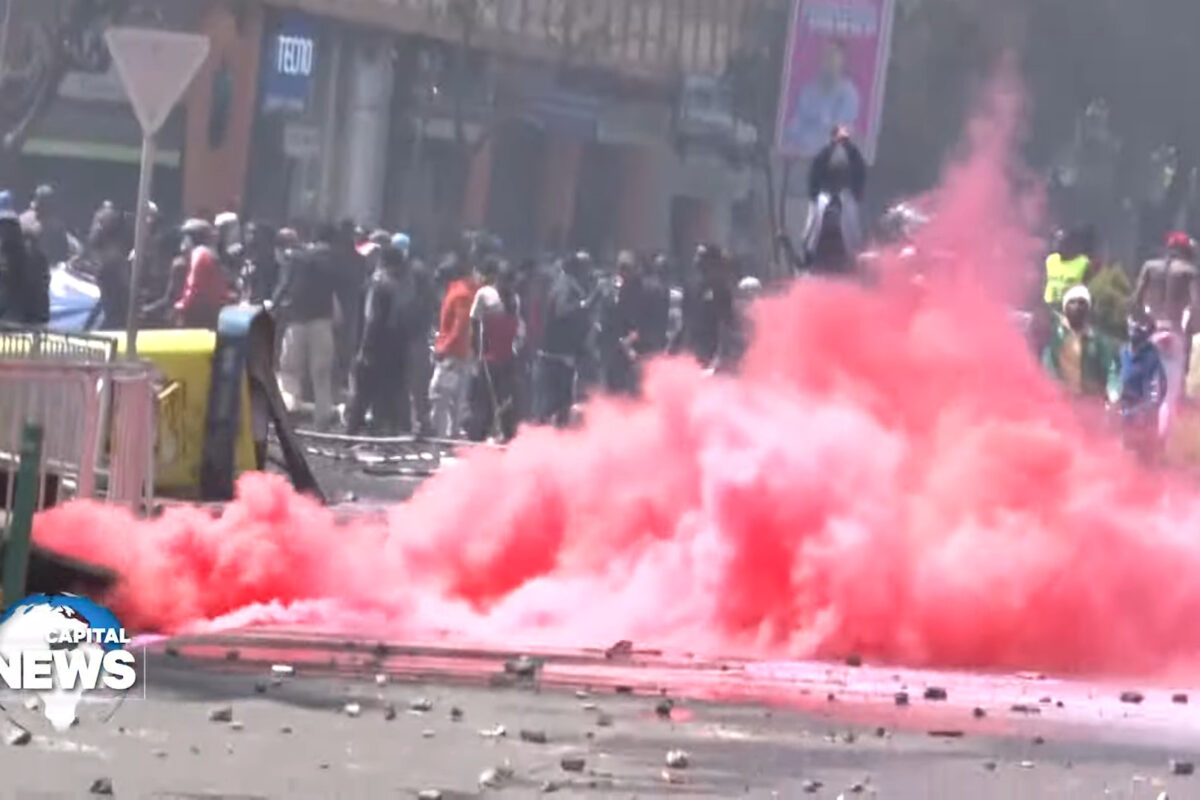Azad Essa is a leading anti-imperialist journalist and senior reporter for Middle East Eye. His recent book “Hostile Homelands: The New Alliance Between India and Israel” is out now with Pluto Press, and he will be doing a book presentation in Berlin on June 9th, to which all are welcome.
To start, can you introduce us to your book, why you wrote it and what the general theme of the book is.
Thank you, Rowan, for speaking with me. I’m a journalist from South Africa. I grew up in the 1980s, during a time when the fight against apartheid was reaching a peak. The country was burning, especially in the townships, and it came alongside an international movement and boycott campaign against the apartheid regime. I was always enamoured by this idea of solidarity, of people somewhere else thinking about you and acting on your behalf. I am a South African of so-called Indian origin. And so, I also grew up with the idea that India had played a leading role in the anti-apartheid movement. For instance, India was part of the non-aligned movement, and it is often said that India was the first country to have imposed a boycott on South Africa. Then you think about Gandhi and Nehru, and all of these moralistic ideals they are meant to represent. I was always enamoured by all of that. But my idea of India changed when I learned about Kashmir as a graduate student. Then I thought, how does a country purportedly pro-Palestine, and such a supporter of the anti-apartheid movement have an occupation of its own?
Thus the book is born out of that encounter between my idea of India, and then my encounter with India and Kashmir, and the idea of India as anti-colonial and pro-Palestinian. How do these contradictions exist?
In 2014 when Modi came into power, the mask fell off from the pretences of Indian foreign policy, and India drew openly closer to Israel. That forced me to think about how India so purportedly pro-Palestine for decades had suddenly become a close ally of Israel. I entered a journey to interrogate what we knew about India’s past policies and how they explained the present.
You also talk a lot about the similarities between Zionism and Hindutva. Readers here will most likely be familiar with Zionism. But can you explain to us what Hindutva is, and what those commonalities and relationships are?
Hindutva emerged in the late 19th and early 20th century. It means “Hinduness” or “ways of being Hindu”. It is a political ideology of Hindu nationalism and supremacy. The project believes that India was always Hindu for thousands of years, and was contaminated by foreigners, particularly Muslims. It therefore, became weak. So for Hindutva, India has to reclaim its Hinduness and become a Hindu state. Everyone within it should bow down to the Hindu nationalist rhetoric. If you don’t, you are a second class citizen at best. This is similar to Zionism — the element of exclusion.
Another similarity is the expansionist idea of Zionism and Hindutva. Zionism has the “Eretz Israel”, or “Greater Israel”. Recently a blog came out in the Times of Israel newspaper, calling for the obliteration of Palestine and about reclaiming the biblical lands of Lebanon and Syria as well. Hindutva has a similar expansionist settler colonial identity. They believe in Akhand Bharat, or “undivided India”. In their imagination, Pakistan is just “Muslim occupied India”, and the greater India expands from Afghanistan to Myanmar.
On top of the ideological connections, you also point out more material connections, especially the military industrial complex. What’s the relation here, and how does it foster these joint occupations?
India’s military relationship with Israel begins in the 60’s, with India buying weapons from Israel in 1962 in the war with China in the Himalayan Mountains. India did not have diplomatic ties with Israel then. But Prime Minister Nehru wrote to several leaders asking for help and Ben Gurion responded. Nehru then asked that weapons be sent in unmarked ships. Ben Gurion refused and Delhi had no choice but to accept them.This was the start of their military relationship and illustrates that while India said they were pro-Palestine, their foreign policy was marked by duplicity. They were quite happy to work with Israel secretly. When you don’t have proper diplomatic channels, or formal channels of communication, things happen undercover. This suits Israel, because Israel uses military trade as a second arm of its diplomacy. They wanted India to become an ally. But they know India is reluctant because there was a certain currency in being seen as pro-Palestinian and anti-colonial — as a leader of the so-called “Third World”. So Israel works with a state militarily, hoping that state becomes dependent on them and will change its mind. That happened in ‘62 for India, and it happened again in ‘65 and ‘71 in India’s wars against Pakistan.
Another aspect to this Israel-India relationship is the ‘67 War in which the Arab armies were decimated. Suddenly many countries understood that Israel’s military industrial complex might be better than they imagined. We often think it’s only the US that got on board with Israel in ‘67. But then you had Mossad and Indian foreign intelligence working together straight from the Prime Minister’s Office in India. In the 70s and 80s, Israel’s military industrial complex started becoming a lot bigger and privatizing. Simultaneously India wanted to join the global capitalist economy. So they began operating together in secret, until normalization took place in the 90s. Today, India buys around 46% to 50% of all Israeli arms produced, making it the biggest buyer of Israeli arms in the world. It’s now between $1 billion to $2 billion a year. In comparison, in 2021, the entire African continent bought 3%, and the Middle East bought 7%. Another nefarious aspect is that India is not just purchasing arms, but co-produces weapons with Israel. And that is incredibly dangerous, when you realize that India has such a hold on the global imagination and access to markets that Israel does not have. So, weapons that Israel could not ordinarily sell to certain places, India can sell. But, when you buy Israeli weapons, you also purchase a technology and a methodology. You’re not just buying a weapon, you’re buying a way of doing things. And it’s about how you handle protesters, citizens, civil society, and the media. You’re buying into an idea.
This is beyond the specific topic of your book, but when you say that Islamophobia is the glue that binds these two projects, I am struck by the similarity to white nationalist movements here in Europe, including in Germany. Do you see connections taking place to white nationalist or fascist movements in other places as well?
In August 2019, the Indian government revoked Article 370 that had allowed Kashmir to have semi-autonomy. Days before they went ahead with this, the Indian government placed Kashmir under a communications lockdown and cut all communications including the internet; they criminalized activists, suppressed the press and sent additional troops to Kashmir to add to the 700,000 troops already there. This outraged Kashmiris in the diaspora, who could no longer even call home. Journalists had to smuggle memory cards and USBs with tourists or family members flying out of Kashmir. This is how they [India] operate — the world’s largest so-called democracy. It drew a lot of criticism in the US especially, and some lawmakers made a bit of a fuss about it. India had to protect its brand and defend itself in the media. Who do you think they met to help them defend their actions? The then Indian ambassador to Washington met with Steve Bannon — to market what India was doing in Kashmir. So, yes, there are links with the far right wing movements over in the west. Modi is very close to both the Republican Party and Democratic Party and those far-right neo-con policymakers. By sharing the west’s “concerns” over Muslims and China, India has thrived as a partner and ally.
Another thing that strikes me is the role of street movements, which has become especially prominent within the last few years in the Israeli case, but in India has a longer history. Can you speak about the role that street movements or mob violence plays?
Now that these far right movements are in power in both India and Israel, the groups conducting vigilante justice or intimidating communities do so with the blessing of the state.
In the past, the impression was that these were fringe movements and not the basis of society or the state. But now they have carte blanche to do the things the state has always wanted to do and with more regularity.
So, laws are being passed and hateful statements are being published that energize and push mobs to do the work of the state. People are going into the occupied West Bank, and planting Israeli flags, or conducting vigilantism and pogroms, all under the protection of the army. It’s all very brazen.
You also noted this emphasis on masculinity, as seen in the idea of the new Israeli man who can conquer the desert. But there’s also this striking narrative within Hindutva discourses of ‘love jihad’. What role does this remaking of this hyper masculine man play within both colonial projects of Hindutva and Zionism? And, to maybe counter that point, what is the image of women within these projects?
Hindu nationalists say that Muslim men seduce Hindu women into a relationship, and then convert them to Islam. They call this “Love jihad” and it has become another way to demonize Muslims, especially Muslim men, and has resulted in mobs and vigilantes attacking Muslim men across various parts of India.
So by this logic, Muslim men are depicted as the enemy of the nation, while Hindu women double for “the nation” who must be protected and defended. So it’s another way of criminalizing Muslims.
And naturally, it had also led to even more ludicrous accusations, like “Corona jihad” — in which groups accused Muslims of spreading the Coronavirus in 2020.
This is part of framing Muslims as outsiders contaminating the nation. The Muslim man contaminates the nation by taking ‘our’ women and contaminates the nation by converting them as well. Such demonization has led to a lot of difficulties over what it means to Muslim in India; the extent to which you have to hide your identity to survive in the country. This is similar to how Jews in Europe and Germany were changing their names in the 1880s and 1890s. We are at that stage. I’m not saying there’s going to be a mass genocide in India. But with the institutional framework being set up and the vigilante culture and obedience to the state, Indian Muslims are in a very vulnerable position and the state is not beyond organizing massacres or pogroms.
My last question then, you talked at the beginning about ideas of solidarity, and so what do you see happening currently? What do you hope your book will contribute to, in terms of opening paths of solidarity between the different groups at play?
You know, it all feels like doom and gloom, with the climate crisis and ongoing “amazonification” of our lives.
One of the things I’m hoping that this book achieves is de-centering the West, or America, as the primary or the only player in this mess. There are multiple actors, some of whom act under the guise of a decolonial or a progressive agenda, but nonetheless stand for the same values of hyper capitalism and even authoritarianism: The world is a lot more complicated now; corporations have the upper hand. The hope is that we have seen these colonial tactics before and we can recognize them.
Kashmir has become a classic settler colonial project and occupation. India copies Israeli tactics, they use Israeli machinery and military technology. It means that the work of activists becomes easier — not necessarily easy — but easier, and they can work more closely together, because they’ve seen it before.
The second thing I’m hoping to unmask is what India has done over the last 70 years as a state, through understanding it as a hegemon in South Asia. It was used by the West as a bulwark against communism first, and then against the Islamist threat, and now to expand the neo-liberal arm of imperialism. And we better catch on to that, because the third element to this is that India is now the most populous state in the world. And being the most populous state in the world, with the added label of being a democracy, means it has the potential to shape the way “democracy” is understood around the world. If India doesn’t allow foreign journalists to come in easily, if it crushes civil society, if its Prime Minister has never held a press conference, then that is what democracy can become elsewhere.
Azad Essa will be in Berlin this week to promote the book. On Tuesday, 6th June, from 8pm, the Berlin LINKE Internationals and the India Justice Project are organising an informal reception for Azad at Café Karanfil, Weisestraße 3 (U-Bahn Boddinstraße). On Friday 9th June, Azad will be presenting his book at the Hopscotch Reading Rooms Wedding office, Gerichtstraße 45 (between Leopoldplatz and Wedding). After the presentation, there will be time for discussion.




